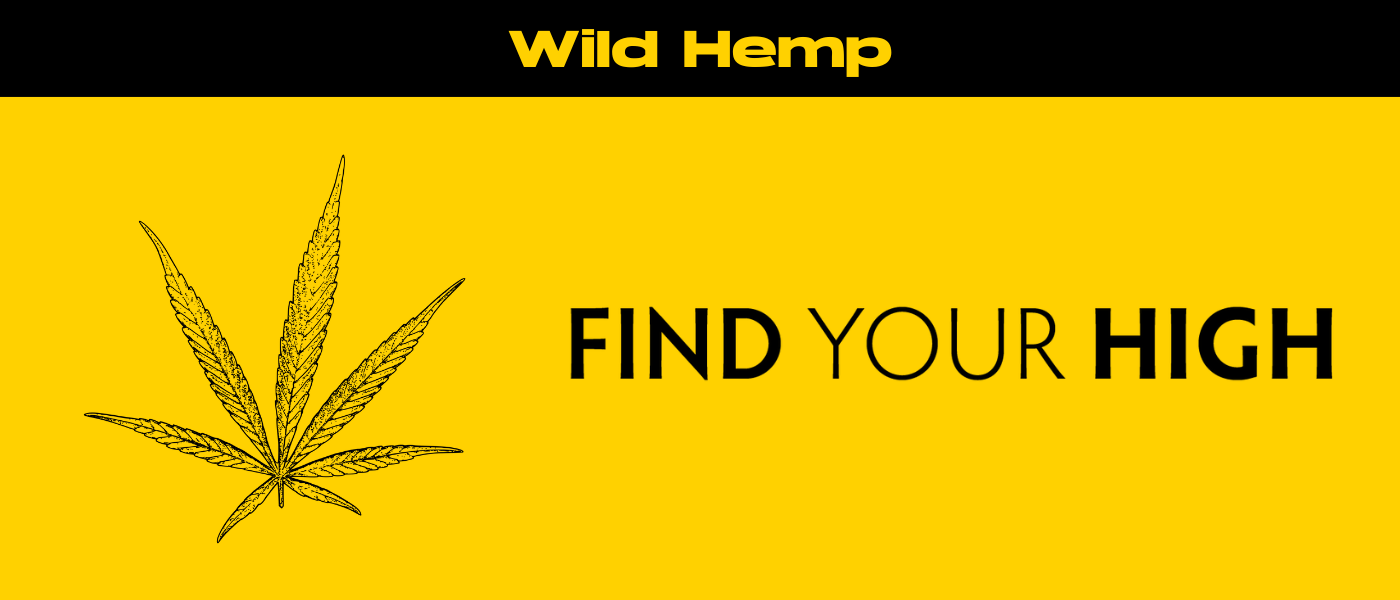Hemp has been part of human history for thousands of years, valued for its versatile uses in textiles, paper, medicine, and more. While hemp plant farming has evolved into a major agricultural industry, there’s another side to this plant that many overlook—its wild form. Wild hemp, as the name suggests, refers to hemp that grows naturally in the wild, without the cultivation techniques we typically associate with modern farming.
Unlike the carefully cultivated varieties grown for specific purposes, wild hemp grows in a more untamed, organic environment. It is often seen sprouting in regions with suitable climates, thriving on its own in various parts of the world. While it shares many characteristics with its domesticated counterpart, wild hemp tends to be more resilient, less refined, and genetically diverse.
Understanding the differences between wild and cultivated hemp is crucial, not only from an ecological standpoint but also in terms of its potential uses, both medicinal and commercial. This blog will explore the fascinating world of wild hemp, from its historical roots to its environmental benefits, medicinal properties, commercial applications, and its bright future in the global market.
By the end, you’ll understand why wild hemp is emerging as a symbol of sustainability, and why it’s a plant we should be paying more attention to in today’s world.
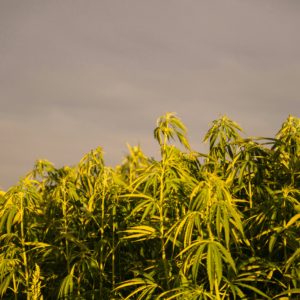
Hemp’s Historical Roots
Hemp’s relationship with humanity dates back to ancient times. The first known use of hemp as a fiber dates back to around 8000 BCE in what is now modern-day China. Early cultures used hemp for rope, textiles, and even paper. The fibers were prized for their strength and durability, which is why hemp became an essential part of ancient trade routes.
In North America, hemp was introduced by European settlers during the 1600s. The plant quickly became popular for its fast-growing nature and its ability to produce fiber for textiles and ropes. In fact, early American farmers didn’t need ‘permission’ to grow hemp, they were required by law to grow hemp plants to meet the demands of the burgeoning colonies.
However, wild hemp, or hemp growing without direct cultivation, has existed in the North American landscape far longer than the European settlers. Indigenous tribes across the continent used hemp for medicinal and practical purposes. Wild hemp was not deliberately grown, but instead spread across the land in favorable climates.
As agricultural practices advanced, the wild variety of hemp was gradually supplanted by more controlled cultivation methods. However, wild hemp continued to grow in remote areas, where the plant thrived without human interference. The resilience of this wild hemp proved to be a testament to its adaptive nature.
While cultivated hemp was often bred for specific purposes, wild hemp flourished on its own, adapting to the environment and maintaining genetic diversity. This natural adaptation to different ecosystems has become one of the key characteristics that makes wild hemp so unique.
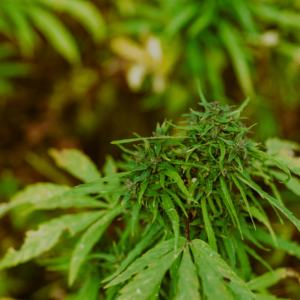
Wild Hemp vs. Cultivated Hemp: Key Differences
Though both wild hemp and cultivated hemp belong to the same species, Cannabis sativa, there are notable differences between the two. The primary differences lie in growth patterns, chemical composition, and adaptability.
Growth Patterns:
Wild hemp tends to grow more erratically compared to its cultivated counterpart. It often sprouts in regions where it is least expected, thriving in disturbed soils, roadsides, or abandoned fields. Wild hemp plants can grow to substantial heights, sometimes reaching over 10 feet tall, and are generally less uniform in appearance than cultivated hemp.
In contrast, cultivated hemp is typically planted in neat rows with the intent to maximize yield. These plants are selectively bred for certain traits, such as fiber strength or cannabinoid content. Cultivated hemp plants are often more compact and uniform.
Chemical Composition:
One of the most significant differences between wild and cultivated hemp is their chemical composition. Wild hemp generally contains a higher level of THC (tetrahydrocannabinol), the psychoactive compound found in cannabis, than cultivated hemp, which is bred to have low THC content and higher CBD (cannabidiol) levels.
The higher THC content in wild hemp may make it less suitable for certain commercial applications, such as CBD oil production, where low THC levels are preferred. However, it also makes wild hemp a potentially valuable source for medicinal and recreational cannabis use in regions where THC content is legally permissible.
Resilience & Adaptability:
Wild hemp has evolved to be highly resilient, adapting to a range of climates and conditions. It thrives in less-than-ideal soil and often requires minimal water and nutrients. In contrast, cultivated hemp requires more controlled conditions, including regular irrigation and soil management to maintain healthy growth.
Genetic Variations:
Wild hemp is genetically diverse, meaning that each plant is unique. Cultivated hemp, on the other hand, tends to be more genetically uniform, as farmers select plants that meet specific criteria for desired characteristics.
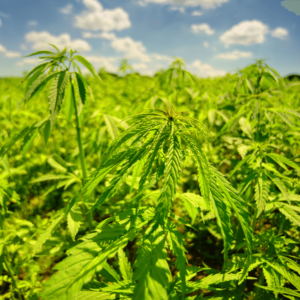
Environmental Benefits of Wild Hemp
Wild hemp offers a variety of environmental benefits, making it an attractive option for sustainable agriculture and ecological restoration. Here are a few key ways it helps the environment:
Soil Health:
- Wild hemp’s deep root system helps prevent soil erosion by stabilizing the ground, particularly in areas prone to drought or heavy rainfall.
- It naturally enriches the soil with organic matter, promoting better soil structure and increasing its fertility.
- Unlike many other crops, wild hemp doesn’t deplete the soil of nutrients, making it a suitable companion for crop rotation and soil rejuvenation.
Carbon Sequestration:
Hemp is known for its ability to absorb carbon dioxide from the atmosphere, making it an important player in the fight against climate change. Wild hemp’s fast growth rate allows it to sequester large amounts of carbon in its leaves, stems, and roots. In fact, hemp has been touted as one of the most efficient plants for carbon capture, making it a valuable tool in reducing greenhouse gases.
Biodiversity:
- Wild hemp contributes to biodiversity by providing food and shelter for a range of species.
- Its flowers attract pollinators such as bees, while its fibrous stems provide nesting materials for various animals.
- Additionally, wild hemp’s ability to thrive in marginal or disturbed lands means it can help rehabilitate environments that may otherwise be unsuitable for farming.
Sustainability:
Growing wild hemp is more sustainable than many traditional crops because it requires fewer resources to thrive. Wild hemp is naturally drought-resistant, pest-resistant, and requires little to no chemical fertilizers or pesticides. As demand for sustainable products rises, wild hemp’s role in environmentally-friendly agriculture becomes increasingly important.
Medicinal Uses of Wild Hemp
Hemp has long been known for its medicinal properties, and while cultivated hemp has gained popularity for its use in therapeutic products, wild hemp also has its place in traditional and modern medicine.
- Natural Remedies: Wild hemp has been used in folk medicine for centuries. Indigenous peoples utilized hemp in various forms to treat ailments such as pain, inflammation, and digestive issues. The plant’s natural compounds, particularly cannabidiol (CBD), have anti-inflammatory, analgesic, and antioxidant properties, making it an ideal candidate for use in natural remedies.
- Scientific Research: Recent research has shed light on the potential medicinal benefits of wild hemp, especially its high CBD content. Studies have shown that CBD may help with anxiety, chronic pain, and certain neurological conditions. While most research has focused on cultivated hemp varieties, wild hemp may also contain therapeutic compounds, particularly in its essential oils and cannabinoids.
- Traditional Uses vs. Modern Applications: Historically, wild hemp was used for medicinal purposes, but modern applications focus on cultivated varieties that offer more predictable and stable chemical compositions. Still, wild hemp holds potential for emerging alternative medicine, particularly in areas where access to cultivated hemp is limited or in regions where wild harvesting practices remain prevalent.
- Legal and Regulatory Aspects: The legal status of hemp varies worldwide, and this influences the medicinal uses of both cultivated and wild varieties. In many regions, the legal threshold for THC content is what restricts the medicinal use of wild hemp, particularly in areas where higher THC levels are prohibited.
Commercial Applications of Wild Hemp
Wild hemp is emerging as an intriguing option for various commercial industries, from textiles to health and wellness products. While its potential has yet to be fully realized, there are several areas where wild hemp could play a significant role.
- Textiles and Fibers: Hemp has long been known for its use in textiles, and wild hemp offers an eco-friendly alternative to synthetic fibers. The strong, durable fibers of wild hemp can be used to create a variety of products, from clothing to ropes and paper. As more consumers demand sustainable options, wild hemp’s role in the textile industry could expand.
- Hemp Oil and Extracts: Wild hemp seeds and flowers can be pressed for oil, which contains healthy fats and is commonly used in cooking and cosmetics. The seeds can also be made into protein powder, offering a plant-based alternative to traditional protein sources. Wild hemp oil is also a popular ingredient in skincare products due to its anti-inflammatory and moisturizing properties.
- Hemp for Food and Supplements: The demand for hemp-based food products, such as hemp seeds, protein powders, and hemp milk, is growing. Wild hemp offers a potential source for these products, with its seeds being rich in omega-3 fatty acids, proteins, and minerals.
- Challenges in Commercialization: One of the challenges of using wild hemp in commercial applications is the lack of consistency. Wild hemp’s genetic diversity means that each harvest can be different, making it difficult to guarantee product quality. Additionally, harvesting wild hemp can be labor-intensive, which may limit its scalability in large markets.
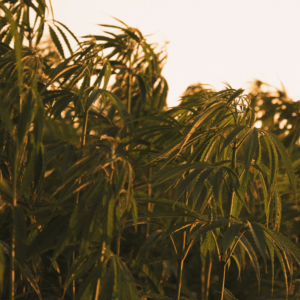
The Future of Wild Hemp
The future of wild hemp looks bright, especially as more people turn to sustainable and natural products.
There is growing interest in rewilding wild hemp by reintroducing it into ecosystems where it can naturally thrive, with rewilding initiatives aiming to restore ecological balance by allowing plants like wild hemp to grow freely, thus improving soil quality, increasing biodiversity, and combating climate change.
Technological advancements in agricultural practices could also make wild hemp more efficient to harvest on a larger scale, with innovations such as seedless varieties, improved harvesting methods, and genetic analysis.
As demand for eco-conscious alternatives increases, wild hemp is poised to become a key player in industries like fashion, wellness, and agriculture. Legal and regulatory shifts around hemp and cannabis may further benefit wild hemp by making it easier for farmers and businesses to capitalize on its economic potential while promoting environmental conservation.
With its wide-ranging environmental, medicinal, and commercial benefits, wild hemp holds great promise as a sustainable resource that can address some of today’s most pressing global challenges.
Conclusion
In conclusion, wild hemp is a remarkable and versatile plant that offers significant benefits across various sectors. From its historical roots as a vital resource for ancient civilizations to its growing relevance in modern industries like textiles, medicine, and sustainability, wild hemp is more than just a relic of the past. Its resilience, environmental benefits, and potential for commercial applications make it an essential player in the future of eco-friendly agriculture and renewable resources.
As we continue to explore the diverse uses of hemp, both wild and cultivated varieties, it’s clear that wild hemp holds untapped potential in addressing some of the most pressing environmental and economic challenges of our time. Whether it’s in restoring soil health, providing natural remedies, or creating sustainable products, wild hemp offers a promising alternative to many of today’s harmful practices.
The future of wild hemp looks incredibly bright, as technological advancements, shifting market demands, and legal reforms continue to create opportunities for this resilient plant. By embracing wild hemp and its vast potential, we can pave the way for a more sustainable and greener future, where nature’s own resources are harnessed to create and enjoy a positive impact on the world around us.
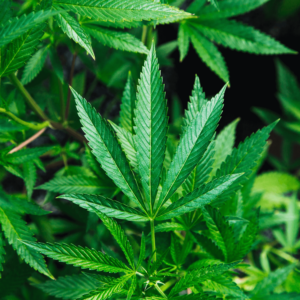
Frequently Asked Questions
1. What is in wild hemp?
Wild hemp is packed with several compounds, some of which are similar to those found in cultivated hemp but in different concentrations. The primary components of wild hemp include:
- Cannabinoids: These are chemical compounds that interact with the body’s endocannabinoid system. The two most well-known cannabinoids in hemp are CBD (cannabidiol) and THC (tetrahydrocannabinol). Wild hemp tends to have higher levels of THC compared to cultivated hemp, though the THC content is typically still below the threshold that would cause psychoactive effects, depending on the plant and region.
- Terpenes: These are aromatic compounds that give hemp its distinctive smell. Terpenes can also have therapeutic effects, such as anti-inflammatory or mood-enhancing properties.
- Flavonoids: These compounds are responsible for the color and some of the antioxidant benefits of hemp. They contribute to the plant’s overall health and may provide additional medicinal properties.
- Fibers and Plant Material: Wild hemp, like cultivated hemp, contains strong fibers that are used for textiles, paper, and other materials. The fibers in wild hemp are typically coarser and more irregular in structure compared to domesticated hemp.
- Essential Oils: Wild hemp also contains essential oils with varying therapeutic properties, depending on the strain.
Wild hemp tends to be more genetically diverse than cultivated varieties, which means it can vary in its cannabinoid content and other chemical components based on its environment.
2. Is hemp and Marijuanas the same?
No, hemp and marijuana are not the same, although both come from the Cannabis sativa plant. The key difference between the two lies in their THC content and their uses:
- Hemp: Hemp is primarily grown for its fiber, seeds, and other non-psychoactive components. The legal definition of hemp, especially in many countries, is based on its THC content. For example, in the U.S., hemp must contain less than 0.3% THC. Hemp is used for a wide range of products, including textiles, paper, biodegradable plastics, health foods, and CBD oils.
- Marijuana: Marijuana, on the other hand, is typically cultivated for its high THC content, which is the compound responsible for the psychoactive effects (the “high”) that people experience when consuming marijuana. Marijuana is primarily used for recreational or medicinal purposes due to its psychoactive properties.
While hemp and marijuana are both from the same plant species, their chemical composition, uses, and legal status are what distinguish them.
3. Are wild hemp cigarettes safe?
The safety of wild hemp CBD cigarettes largely depends on the context and how the hemp is processed, but there are a few considerations:
- Nicotine-Free Alternative: Wild hemp cigarettes do not contain nicotine, which is the addictive compound found in tobacco. As a result, they may appeal to people looking for a tobacco-free alternative.
- THC Content: While wild hemp tends to contain higher levels of THC compared to cultivated hemp, the THC concentration in wild hemp cigarettes may still be low enough not to induce significant psychoactive effects. However, if the THC content is too high, it could lead to unwanted intoxication, especially for those not accustomed to THC.
- Health Effects: While smoking anything can be harmful to the lungs due to the inhalation of smoke and other toxins, hemp cigarettes are generally considered less harmful than tobacco cigarettes. Hemp smoke typically contains fewer carcinogens than tobacco, but there are still risks related to smoking in general, such as lung irritation or respiratory issues.
- Legal and Regulatory Concerns: Depending on your region, wild hemp cigarettes may have a higher chance of containing THC levels that could make them illegal. Always check the THC content before purchasing.
In summary, while wild hemp cigarettes may be a safer alternative to tobacco cigarettes in some respects, smoking them is not without health risks. It’s essential to understand the THC content and always source products from reputable suppliers.
4. Will wild hemp show up on a drug test?
Yes, wild hemp could potentially show up on a drug test, depending on its THC content and the type of drug test being used. Here’s why:
- THC Presence: Wild hemp generally contains higher levels of THC than cultivated hemp. If the THC content exceeds a certain threshold (such as 0.3% in the U.S.), it could potentially lead to a positive drug test result, especially for those who use wild hemp products such as cigarettes, oils, or extracts that contain high amounts of THC.
- Types of Drug Tests: Common drug tests, such as urine tests, blood tests, and saliva tests, are designed to detect traces of THC and its metabolites. If you consume wild hemp products that contain THC, there’s a possibility that THC could be detected, even if the amount consumed is small.
- Frequency of Use: For occasional users, THC might remain in the body for a few days to weeks, depending on factors like metabolism and the quantity consumed. For frequent users, THC can stay in the system for a longer period—up to 30 days or more in some cases.
- Full-Spectrum CBD Products: Many hemp products, especially CBD oils, are full-spectrum, meaning they may contain trace amounts of THC. Even if the THC content is low, it may still show up on a drug test if consumed in significant quantities.
If you’re concerned about passing a drug test, it’s best to stick with hemp products with negligible THC (such as CBD isolates or broad-spectrum CBD) or avoid wild hemp products altogether if the THC content is unclear. Always review the label and lab results for accurate THC content.




